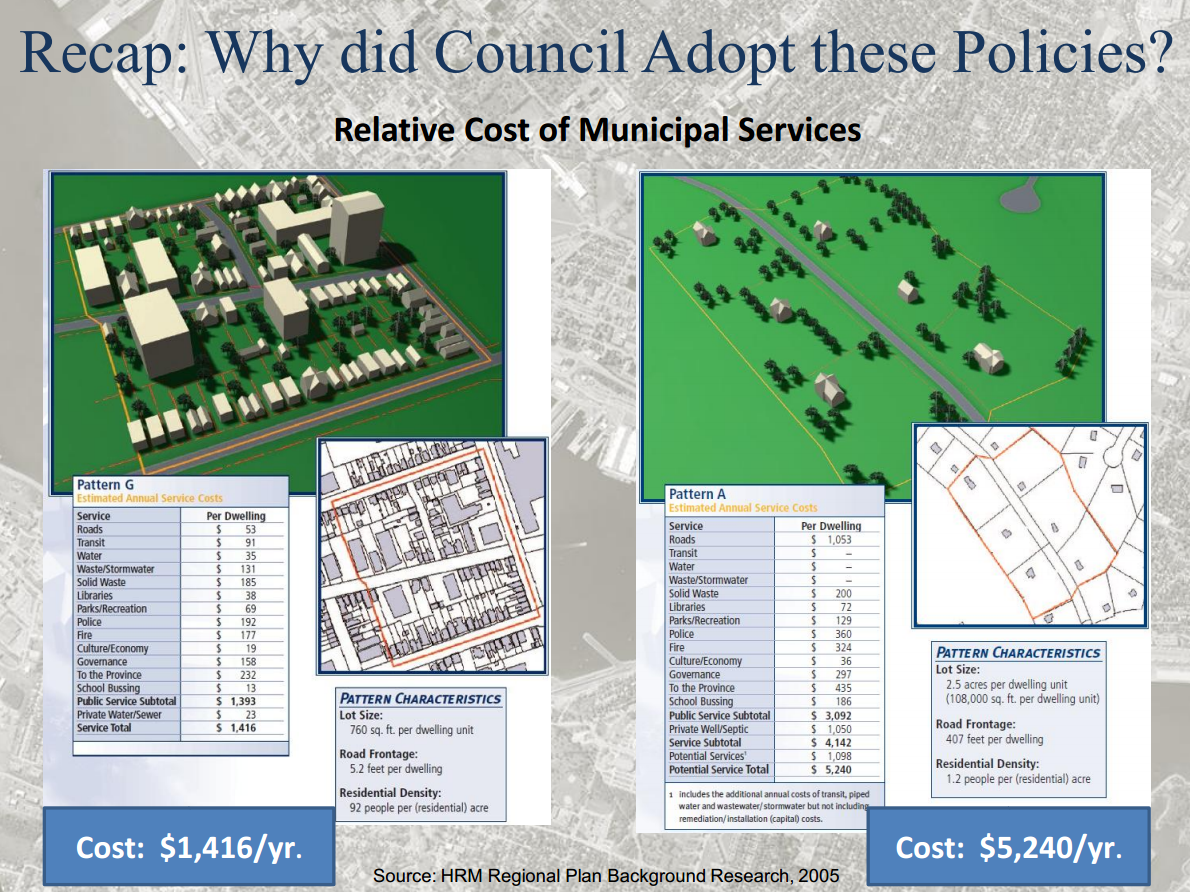Quote:
Originally Posted by someone123

This report has a bunch of interesting information on this question: http://strategicurbanpartnership.com...s-approved.pdf
The reality is that, under HRM's property tax system, there's little relationship between the cost to provide services and taxes paid. Suburban residential property owners pay the lowest taxes (lowest mill rate and lower assessments), while commercial property owners pay much higher rates that subsidize residents. In my experience, few suburban homeowners are aware of this subsidy.
Here's a breakdown from the report. The only thing that made this possible is that HRM is maybe 5% Kingswood type developments subsidized on the backs of a much larger urban and commercial tax base. If that were to go up to 50%, the city would have chronic problems paying for its services and infrastructure. This style of development simply isn't a viable long-term option, unless people want their property taxes to triple.
 |
Great information. Thanks for that!

It's an interesting document which was definitely created by a side wishing to promote an idea (which is not a bad thing, just an observation).
I didn't read over the whole 30 pages in great detail, nor am I an expert on city planning, but to me it seems like the gist of the presentation is that since property taxes are based on assessment cost rather than area quantities of the land being used, that Halifax is no longer bringing in enough tax dollars from the urban core and thus the move should be to increase residency (by both business and private dwelling) in these areas to increase the total taxes collected.
In the document you've posted, I think the fact that they are using a Kingswood-type development is interesting as they are comparing an urban environment to the extreme suburban environment (as you mentioned, in the 5% range). That being said, I would like to see numbers that more reflect what the average suburban dwelling would be (i.e. smaller "postage stamp" lots, such as in Bedford and Clayton Park West, as well as many parts of Dartmouth). I would suspect that these areas are much less subsidized than this document would make it appear.
Also, I'm curious, if the suburbs are such a drain on the city economy why did Halifax push for amalgamation into HRM when many of these outlying communities which are now being considered (by some) as "greedy" suburbs were doing fine as stand-alone communities beforehand? For example, when I lived in Dartmouth I recall that the services provided their citizens appeared to be superior to that of Halifax (road clearing and maintenance being one of the obvious ones, but water and sewer also included). It appeared that once amalgamation occurred, Dartmouth's services suffered as a result.
Bedford and Sackville seemed to be doing fine as well.
Perhaps if these communities had been left to survive on their own, then urban Halifax would have been able to thrive without the "drain" of the "greedy" suburban communities?

All in all, though, I agree that HRM should be concentrating on making improvements to the urban core that it has neglected for decades and give the people who want to live downtown the option to do so. It will benefit everybody in the long run.




